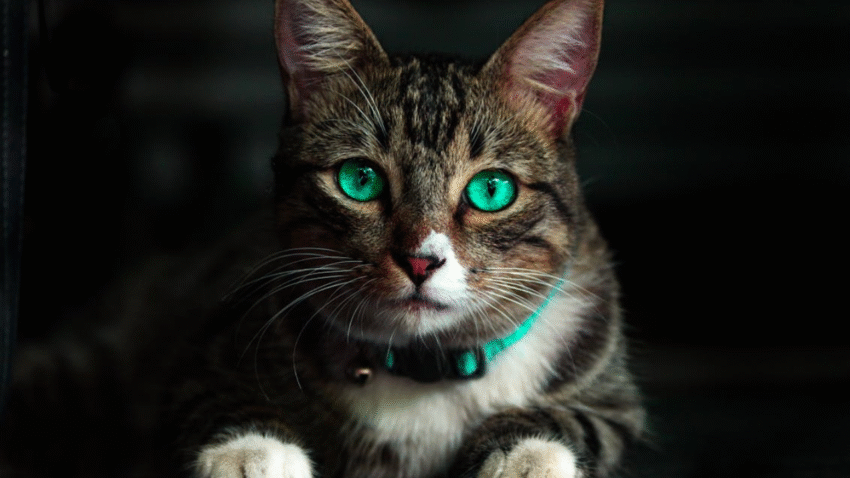Introduction
Has your cat stopped playing, grooming, or showing interest in affection? Just like humans, cats can experience depression—especially after a major life change or prolonged stress. In this step-by-step guide, you’ll learn how to recognize the signs of feline depression and what you can do to help. Early intervention is key to restoring your cat’s emotional and physical well-being.
Why Recognizing Feline Depression Matters
Feline depression is often overlooked because cats are naturally independent and reserved. However, changes in mood, behavior, and routines can signal emotional distress. Left untreated, depression can lead to poor hygiene, malnutrition, or even secondary health issues due to lack of movement or grooming.
Cats may become depressed due to:
- The loss of a companion (human or animal)
- Moving to a new home or environment
- Changes in household routine or family dynamics
- Boredom or lack of stimulation
- Illness or pain
Recognizing the signs early allows you to make changes that improve your cat’s mental health and overall quality of life.
Step-by-Step Guide to Spotting Depression in Cats
Step 1: Monitor Activity Levels
- A sudden drop in playfulness or interest in toys is one of the first signs of depression.
- If your cat spends most of the day hiding, sleeping excessively, or avoiding interaction, take note.
- Lethargy that lasts more than a couple of days is a red flag.
Tip: Track your cat’s usual activity and compare it to their recent behavior to spot differences more easily.
Step 2: Observe Eating and Drinking Habits
- Cats with depression may eat significantly less—or stop eating altogether.
- Some may show the opposite behavior and overeat due to boredom or anxiety.
- Monitor their water intake, too. Dehydration can worsen symptoms and lead to health issues.
Unexplained weight loss or gain should prompt a vet visit.
Step 3: Check Grooming Behavior
- Healthy cats groom themselves regularly, often several times a day.
- If your cat’s fur looks greasy, matted, or unkempt, they may be too depressed to groom.
- Over-grooming, especially in one spot, can also signal stress or emotional distress.
Bald patches or skin irritation can result from excessive licking.
Step 4: Look for Changes in Vocalization
- Some depressed cats become unusually quiet, while others may vocalize more—especially at night.
- Increased meowing, yowling, or howling can indicate distress or loneliness.
- A normally chatty cat that goes silent (or vice versa) may be experiencing emotional imbalance.
Watch for these changes alongside other signs to build a fuller picture.
Step 5: Evaluate Litter Box Behavior
- Depression can lead to inappropriate elimination outside the litter box.
- If your cat begins urinating on your bed, clothing, or furniture, it may be a cry for help.
- Rule out medical causes like urinary tract infections before attributing this to depression.
Stress and emotional discomfort often manifest in changes to bathroom habits.
Step 6: Consider Environmental or Social Changes
Ask yourself:
- Has a family member or pet recently moved out or passed away?
- Have you changed jobs or schedules, leaving your cat alone more often?
- Did you recently move or renovate your home?
Cats are creatures of habit, and even small disruptions can trigger emotional responses.
Common Mistakes to Avoid
- Assuming your cat is just “lazy”
Cats sleep a lot, but ongoing lethargy or disinterest in previously enjoyed activities is not normal. - Punishing unwanted behavior
Peeing outside the litter box or hiding isn’t misbehavior—it’s a sign of distress. Punishment can worsen the issue. - Not ruling out medical issues
Illnesses like diabetes, kidney disease, or dental problems can mimic depression. Always check with your vet first. - Forcing interaction
A withdrawn cat needs gentle encouragement—not overwhelming affection or attention. - Ignoring subtle changes
Depression often starts slowly. Early changes in behavior may seem small but are important clues.
Extra Tips & Recommendations
- Enrich your cat’s environment: Add vertical spaces, window perches, or puzzle feeders to stimulate curiosity.
- Schedule daily playtime: Even 10–15 minutes of focused play can boost your cat’s mood.
- Try pheromone diffusers: Products like Feliway can create a calming environment for stressed cats.
- Provide companionship: Some cats benefit from another pet (introduced gradually), while others prefer one-on-one time with their human.
You might also like: How to help your cat adjust to a new baby or pet and How to keep your indoor cat active and fit.
Conclusion
Cats may not speak our language, but their behavior tells a powerful story. If your feline friend is hiding more, eating less, or grooming less often, it may be a sign of feline depression. By observing your cat closely and making thoughtful changes to their environment, you can help them feel safe, loved, and emotionally balanced again.
